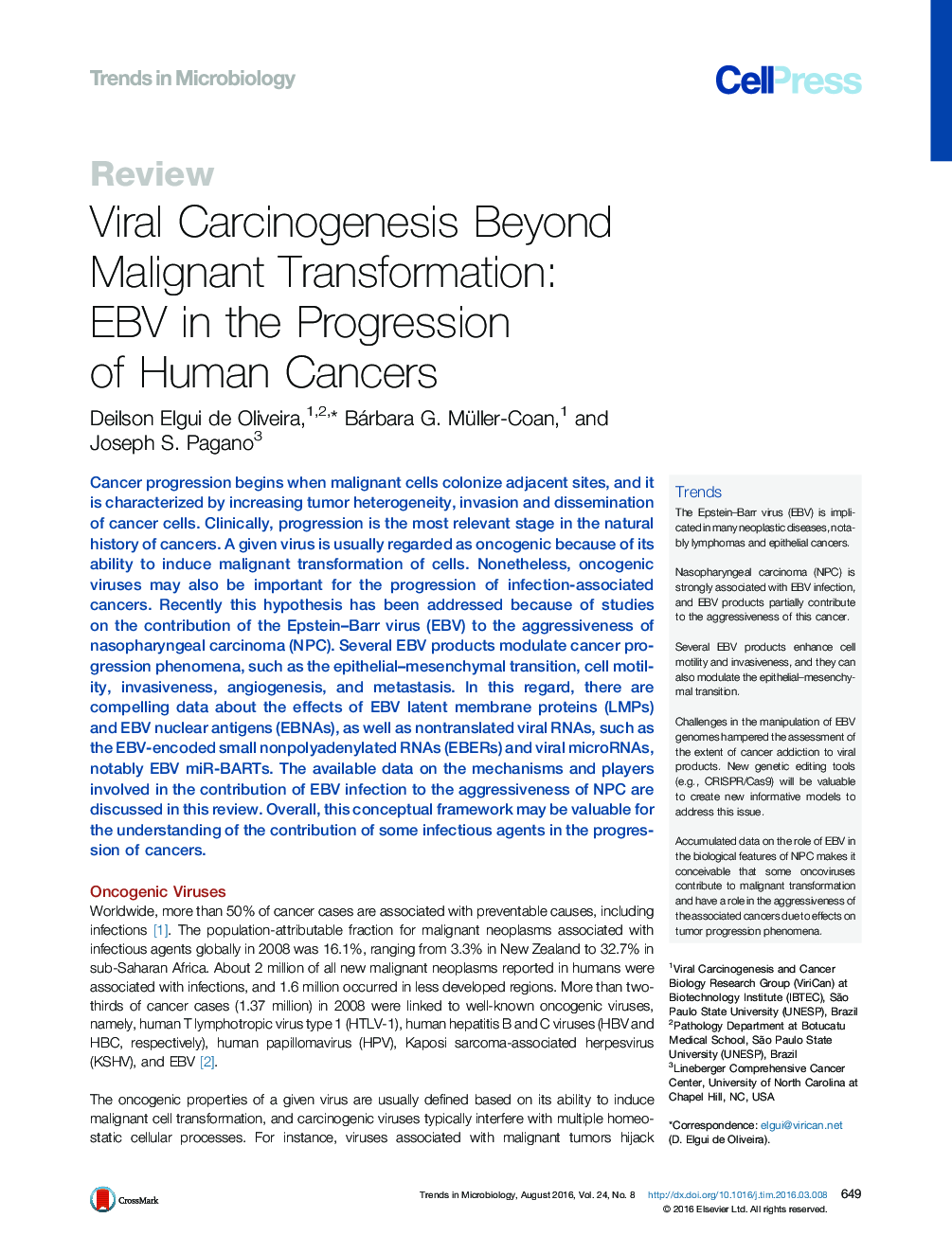| Article ID | Journal | Published Year | Pages | File Type |
|---|---|---|---|---|
| 3421704 | Trends in Microbiology | 2016 | 16 Pages |
Cancer progression begins when malignant cells colonize adjacent sites, and it is characterized by increasing tumor heterogeneity, invasion and dissemination of cancer cells. Clinically, progression is the most relevant stage in the natural history of cancers. A given virus is usually regarded as oncogenic because of its ability to induce malignant transformation of cells. Nonetheless, oncogenic viruses may also be important for the progression of infection-associated cancers. Recently this hypothesis has been addressed because of studies on the contribution of the Epstein–Barr virus (EBV) to the aggressiveness of nasopharyngeal carcinoma (NPC). Several EBV products modulate cancer progression phenomena, such as the epithelial–mesenchymal transition, cell motility, invasiveness, angiogenesis, and metastasis. In this regard, there are compelling data about the effects of EBV latent membrane proteins (LMPs) and EBV nuclear antigens (EBNAs), as well as nontranslated viral RNAs, such as the EBV-encoded small nonpolyadenylated RNAs (EBERs) and viral microRNAs, notably EBV miR-BARTs. The available data on the mechanisms and players involved in the contribution of EBV infection to the aggressiveness of NPC are discussed in this review. Overall, this conceptual framework may be valuable for the understanding of the contribution of some infectious agents in the progression of cancers.
TrendsThe Epstein–Barr virus (EBV) is implicated in many neoplastic diseases, notably lymphomas and epithelial cancers.Nasopharyngeal carcinoma (NPC) is strongly associated with EBV infection, and EBV products partially contribute to the aggressiveness of this cancer.Several EBV products enhance cell motility and invasiveness, and they can also modulate the epithelial–mesenchymal transition.Challenges in the manipulation of EBV genomes hampered the assessment of the extent of cancer addiction to viral products. New genetic editing tools (e.g., CRISPR/Cas9) will be valuable to create new informative models to address this issue.Accumulated data on the role of EBV in the biological features of NPC makes it conceivable that some oncoviruses contribute to malignant transformation and have a role in the aggressiveness of the associated cancers due to effects on tumor progression phenomena.
